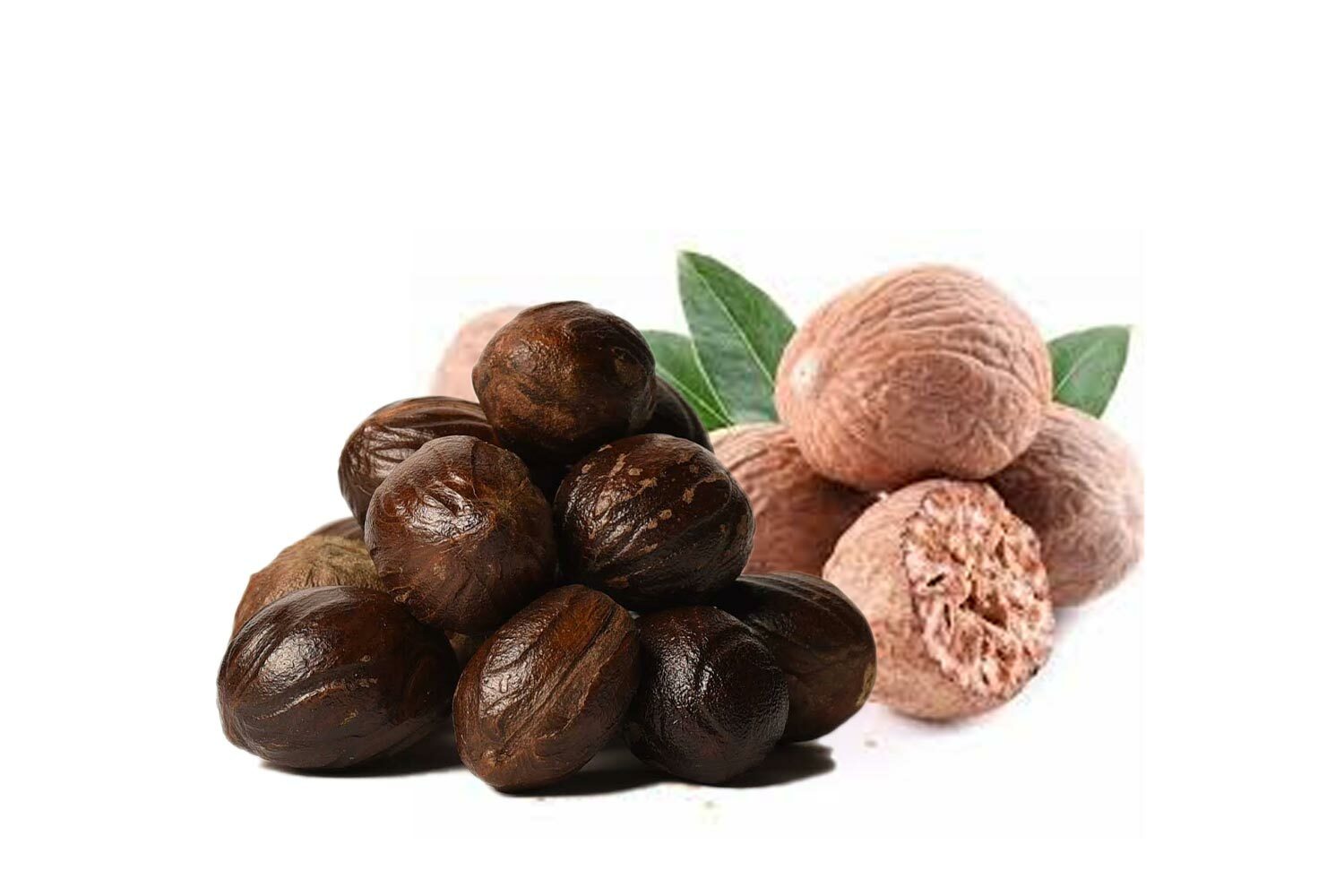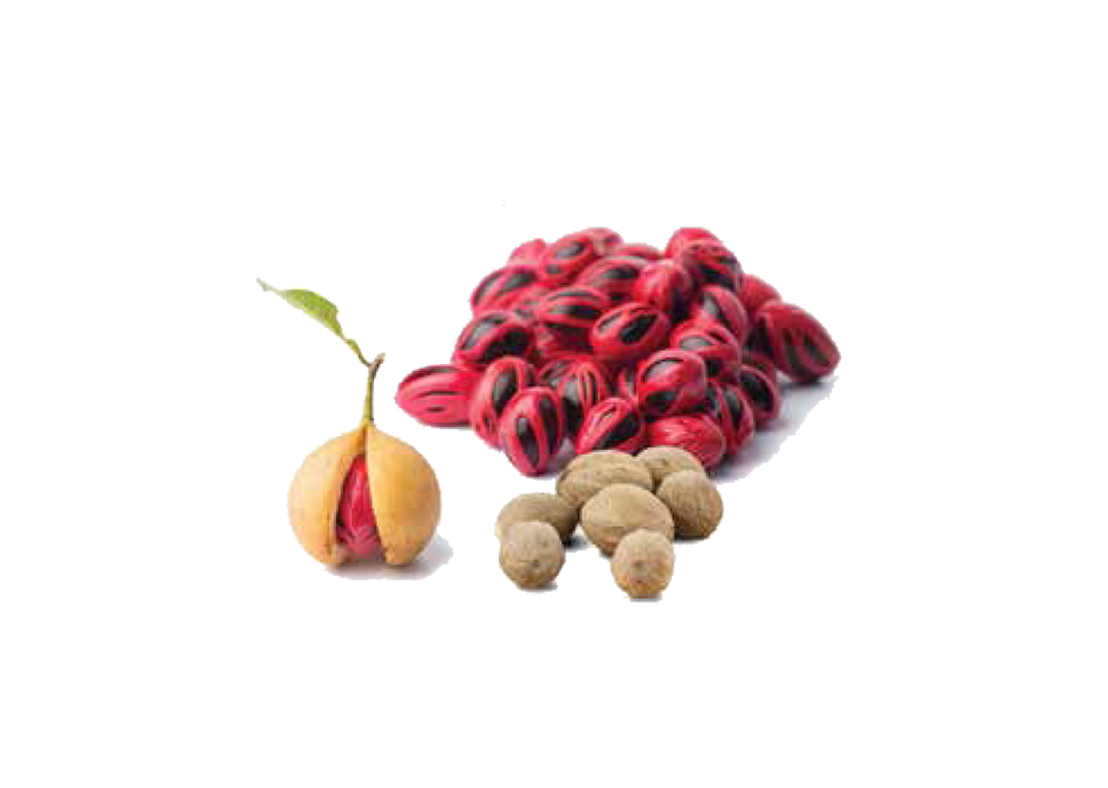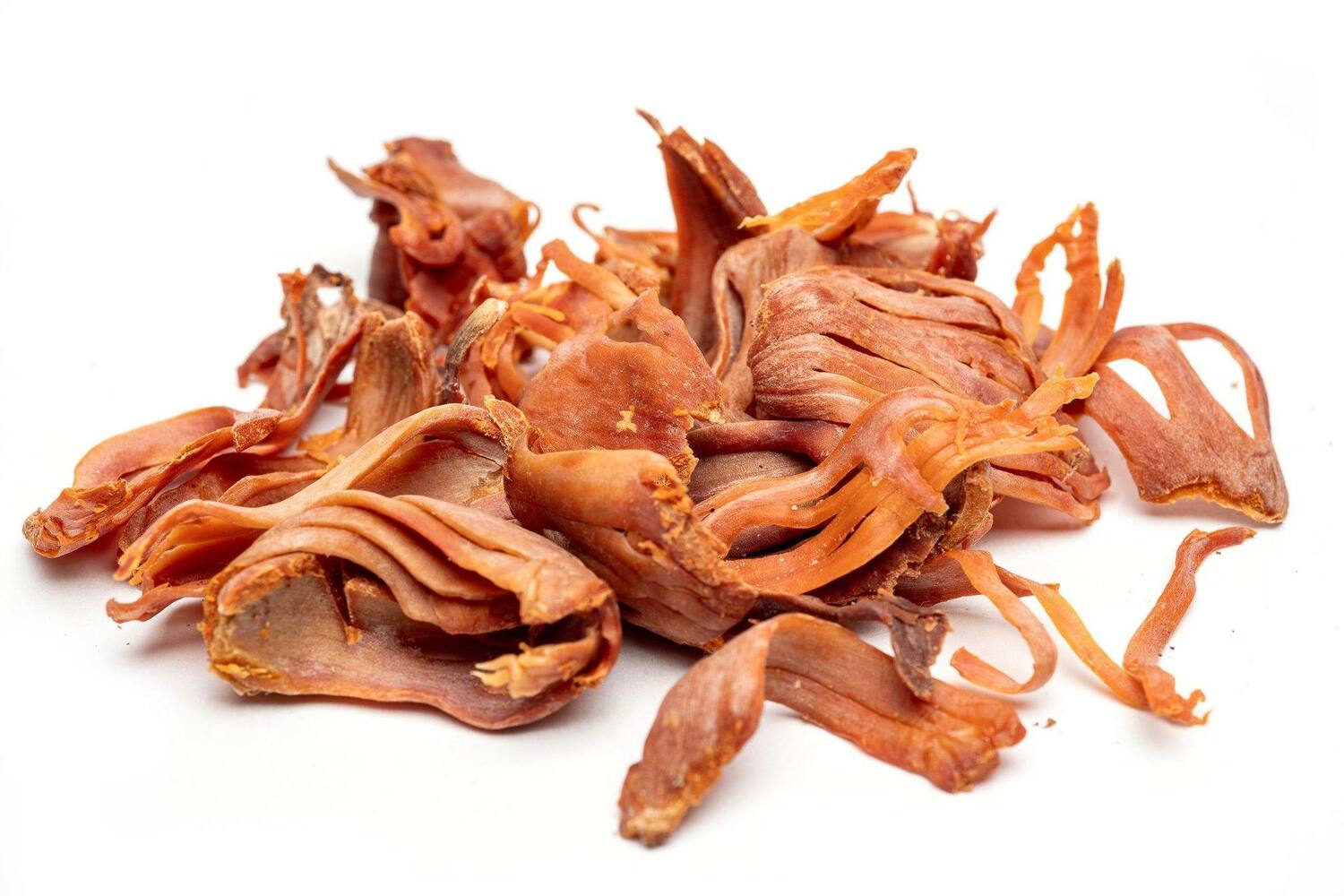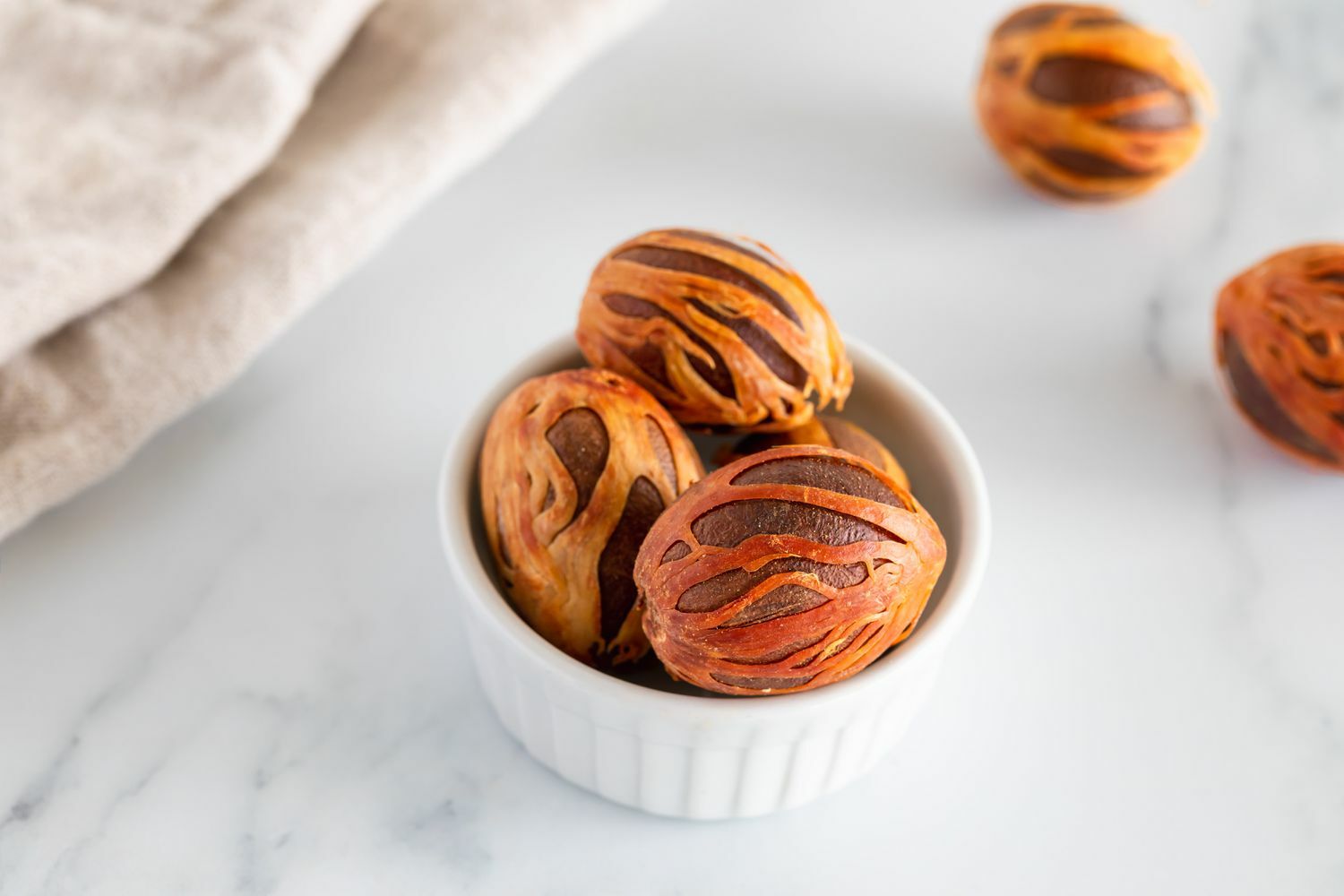Nutmeg and Mace
Although some reports show that Nutmeg and Mace was introduced into Sri Lanka at the beginning of the 19th century, evidence showing that the plant was brought much earlier by merchants also exists. The tree is native to the East of Indonesia. Apart from Sri Lanka, other major producers of the crop include India, China, Trinidad, Grenada, and Indonesia.
The Nutmeg tree belongs to the family Myristicaceae and its species name is Myristica fragrans. It is evergreen and grows to a maximum height of about 20m. The flowers are unisexual while the leaves are dark green and alternate. Nonetheless, bisexual flowers also exist.
The fruits are fleshy and broad. They also have longitudinal ridges along their circumference. During ripening, the fruit’s color changes to yellow. Moreover splitting of the pericarp into two halves also occurs thereby exposing the seeds. These seeds are shiny and are covered by red aril.
The nutmeg tree produces two commercial products: Nutmeg and Mace.
Nutmeg
This is the kernel of the egg-shaped seed of the tree.
Mace
This is the reddish and net-like outer covering of the seed’s shell.
Growing Areas
The Cultivation of the Nutmeg crop is mainly practiced in the mid country. The major growing districts are Matale, Kegalle, and Kandy. The total are covered by this crop is about 930 hectares.
Varieties
Although there has not been any specific identification of varieties, several factors should be considered before selecting the mother tree. These factors include: the weight of the mace, the nut’s size, and the habit of bearing.



